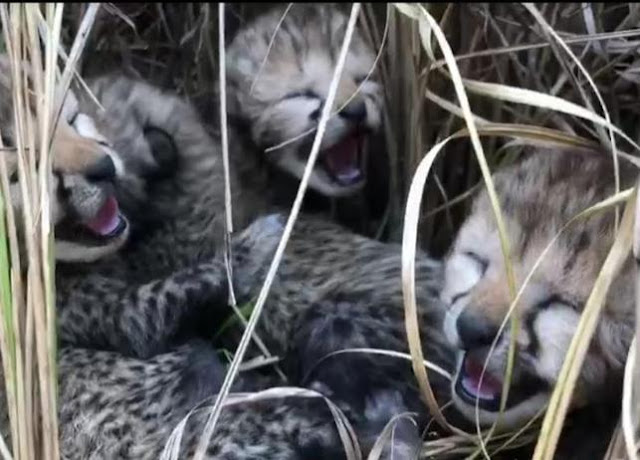Born In An Enclosure
Siyayya is still living in a 150 hectare enclosure inside Kuno national park where “she had interacted with Freddie and Elton, the two males “. After the 8 Namibian cheetahs were airlifted to Kuno and quarantined before their release to different enclosures, the two males were released in a bigger enclosure - number 4- of about 150 hectare. Siyayya was released also in the neighbouring enclosure number 5. First they interacted from behind the wired fence but sometime around third week of December the gate between the two enclosures separating them was opened leading to mating, said an official of theUnion ministry of forest ,environment and climate change who is part of the cheetah project and action plan. The gestation period of cheetah is about 90 days and we were expecting good news, he said. Though only 5 % cheetah cubs survive to adulthood, Siyayya has an advantage of living inside an enclosure where there is minimum risk of predators.
Also read: More Questions On Cheetah Project in Kuno
When in the wild, mothers keep their cubs hidden in their dens for 6 to 8 weeks to keep them protected from lions, hyenas and leopards among others. “The main factor for their survival for the first 60 days is their ability to stay hidden from the predators”, officials said adding, “we will have to ensure that there would be no predators inside the enclosure where Siyayya is looking after her new born.” “Here it is almost like nursing home conditions inside her enclosure but lets us see how long and how many of them survive . You can’t predict with the wildlife animals” , they said. Siyayya was not released in the open jungle of Kuno . But three males including Freddie, Elton and one female- Asha- were released earlier this month. Two females, Savannah and Tiblis were not found fit for their release in the wild. There are wild cheetah but were bred in captivity and may not survive in the wild. The eighth cheetah Sasha died two days ago



Comments
Post a Comment